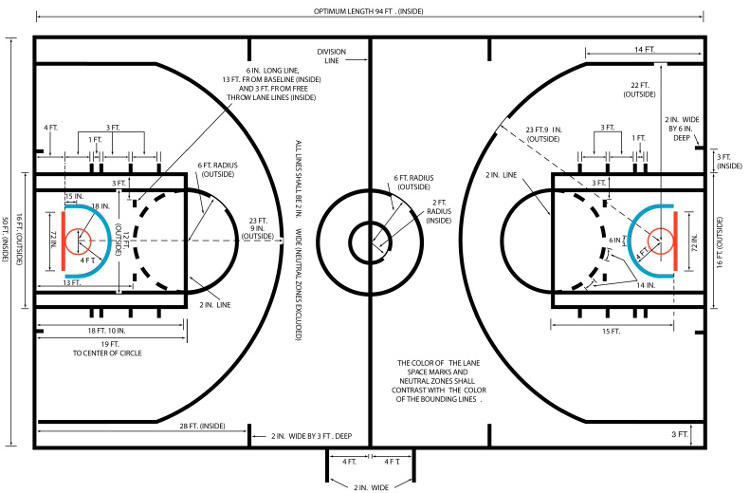When Did The Nba Shorten The 3 Point Line – is the article you’re searching for. Hopefully, you can find information related to When Did The Nba Shorten The 3 Point Line here, all of which we’ve summarized from various reliable sources.

The Evolution of the NBA’s Three-Point Line: A Historical Journey
The three-point shot has revolutionized the game of basketball, adding an element of excitement and strategy to the sport. While most fans are familiar with the current three-point line, few know about its fascinating evolution over the years. In this article, we delve into the history of the three-point line in the NBA, exploring its origins, changes, and impact on the game.
From the ABA to the NBA
The concept of a three-point shot originated in the American Basketball Association (ABA) in the early 1960s. The ABA introduced the three-point line as a way to differentiate itself from the National Basketball Association (NBA) and make the game more exciting. The initial three-point line in the ABA was located 25 feet from the basket, and it quickly became a popular feature of the league.
In 1976, the ABA and NBA merged, and the three-point line was adopted by the NBA. However, the NBA initially set the three-point line further back at 23 feet, 9 inches. This decision was made to reduce the number of three-pointers made and maintain a balance in the game.
The Search for the Optimal Distance
Over the next few seasons, the NBA experimented with different distances for the three-point line. In 1979, the league moved the line back to 22 feet. This change was made to encourage more three-point attempts and open up the court.
In 1983, the NBA made a significant adjustment to the three-point line, moving it to 23 feet, 9 inches—the same distance as the ABA’s original three-point line. This distance proved to be the “sweet spot,” as it allowed for a reasonable number of three-pointers without making them too easy.
The Three-Point Revolution
The introduction of the three-point line in the NBA transformed the game. It encouraged teams to shoot more from beyond the arc, which led to higher scores and more thrilling contests. Players like Larry Bird, Michael Jordan, and Reggie Miller became known for their deadly three-point shots, and the three-point line became an integral part of the modern NBA.
Tips and Expert Advice for Mastering the Three-Point Shot
For players looking to improve their three-point shooting, there are several tips and expert advice that can help you succeed.
- Repetition is Key: The more you practice shooting three-pointers, the more consistent you will become.
- Proper Form: Focus on maintaining a balanced stance, keeping your elbows tucked in, and releasing the ball smoothly.
- Find Your Shot: Experiment with different shooting motions and find one that feels natural and comfortable for you.
- Leg Drive: Generate power for your shot by using your legs to push up and through the shot.
- Follow Through: Extend your arm fully after releasing the ball and follow through with your shot.
FAQ on the NBA’s Three-Point Line
- Q: When was the three-point line first introduced in the NBA?
A: The three-point line was introduced in the NBA in 1979.
- Q: What is the current distance of the three-point line in the NBA?
A: The current distance of the three-point line in the NBA is 23 feet, 9 inches.
- Q: Who is considered the greatest three-point shooter of all time?
A: Stephen Curry is widely regarded as the greatest three-point shooter of all time.
Conclusion
The evolution of the three-point line in the NBA has had a profound impact on the game of basketball. It has added excitement, strategy, and skill to the sport, and it has helped to shape the way the game is played today. As the NBA continues to evolve, the three-point line will undoubtedly continue to play a key role in the future of the game.
Are you interested in learning more about the history of the NBA three-point line? Share your thoughts and questions in the comments below, and let’s continue the discussion.

Image: www.rookieroad.com
When Did The Nba Shorten The 3 Point Line has been read by you on our site. Thank you for your visit, and we hope this article is beneficial for you.